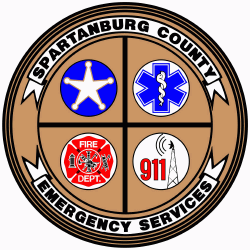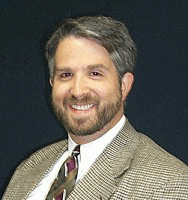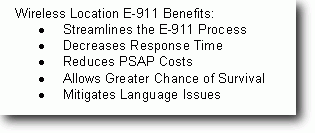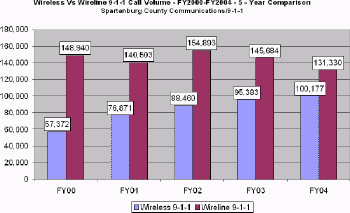 An
internationally recognized business and cultural center, Spartanburg
County, South Carolina is home to BMW Manufacturing Corporation,
textile and chemical manufacturing leader Milliken & Co., hotelier
Extended Stay America and the family restaurant chain Denny's
Corporation.It is also located in the rapidly growing Interstate 85
corridor between Atlanta and Charlotte, North Carolina.With more than
814 square miles and a population of 260,000, Spartanburg County is one
of the leaders in the deployment of wireless E-911.
An
internationally recognized business and cultural center, Spartanburg
County, South Carolina is home to BMW Manufacturing Corporation,
textile and chemical manufacturing leader Milliken & Co., hotelier
Extended Stay America and the family restaurant chain Denny's
Corporation.It is also located in the rapidly growing Interstate 85
corridor between Atlanta and Charlotte, North Carolina.With more than
814 square miles and a population of 260,000, Spartanburg County is one
of the leaders in the deployment of wireless E-911. David
Jones, ENP (Emergency Number Professional), is the Director of
Emergency Services for Spartanburg County.A veteran of the emergency
services field for more than 20 years, he has been at the forefront of
deployment of wireless E-911 services.Jones heads the only Public
Safety Answering Point (PSAP) in Spartanburg County, one of the first
PSAPs to implement Phase II wireless E-911 in December 2002.
David
Jones, ENP (Emergency Number Professional), is the Director of
Emergency Services for Spartanburg County.A veteran of the emergency
services field for more than 20 years, he has been at the forefront of
deployment of wireless E-911 services.Jones heads the only Public
Safety Answering Point (PSAP) in Spartanburg County, one of the first
PSAPs to implement Phase II wireless E-911 in December 2002.With the emergence of cell phones and volumes of wireless 911 calls increasing every year, it became clear to Jones that the 911 system needed a way to locate wireless callers who were often disoriented due to injury or simply didn't know their location.
In one case, a Spartanburg County woman who was discharged from a hospital with a breathing problem called 911 from a cell phone after she began experiencing more breathing difficulties while driving home in her car.The dispatcher resorted to an alternate method of finding her exact location when she was unable to describe her location.The dispatcher sent several emergency responders out in the area and found her by carefully listening to the sound of the sirens and who was closest to her.According to Jones, "the dispatcher did a great job in finding the woman, but you can't do that every day."
Accuracy and cost are key concerns in an age when most municipalities find their budgets cut severely.Dispatching unnecessary ambulances or helicopters becomes a key concern, one that can be mitigated with wireless location.
"The cost of dispatching a chopper can be as high as $10,000 per emergency response," said Mike Amarosa, Sr.VP of Public Affairs for TruePosition and former head of the world's largest PSAP in New York City."The cost savings is dramatic if ten unnecessary chopper trips per year are eliminated for each hospital with a trauma unit."
Jump-Starting E-911 Location
The FCC's E-911 Mandate requires carriers to implement technology that automatically locates wireless callers.It is divided into two parts. Phase I required carriers, upon appropriate request by a local PSAP, to report the telephone number of a wireless 911 caller and the location of the antenna that received the call.Phase II requires wireless carriers to provide more precise location information, within 50 to 100 meters (in most cases).The deadline for Phase II was originally October 2001, giving carriers six months to respond to PSAP requests and deploy.The deadline for Phase II was extended to December 31, 2005 after the October 2001 deadline passed.
In March of 2001, Jones' PSAP was ready and he initiated Phase II by sending letters requesting deployment to the six wireless carriers servicing his area.At that time carriers were expected to meet the October 2001 FCC Phase II deadline.However, none of the carriers responded to Jones' letter.In November 2001, he devised a new strategy with the help of a lawyer, Jim Rion, who is the wireless program project manager for the state of South Carolina's 9-1-1 office.During this period, the FCC extended its Phase II deadline for wireless carriers to December 31, 2005.
"We were coming off of a very acrimonious period from the summer of 2001 and came up with a strategy to move beyond the acrimony," recalled Jones who was active in lobbying against carrier waivers as a member of the national, as well as state, public safety community.
Rion and Jones devised a strategy to forge new partnerships with carriers to move forward.The new strategy was based on three main principals to ensure success: cooperation and collaboration; the sharing of mutual expectations; and that no demands were made for unreasonable or unfulfillable promises.By the end of November 2001 Jones had sent out a new set of letters to the carriers for Phase II built around the concept of partnership.

The new approach worked.There was a unanimous response to the second letter and Jones and Rion continued forging partnerships with the carriers.By the end of January 2002 there were six projects in motion.By February 2003, they had deployment complete for all six carriers in the Spartanburg area.The 911 system provider, BellSouth, appointed a project manager right away as did each of the wireless carriers.Phase II, a complex process, required work from numerous contractors and subcontractors for each wireless carrier deployment ranging from TruePosition for location in the Cingular deployment to other vendors for CAD and CPE.
"The carriers were quick to participate and join a partnership with us," commented Jones.All parties including Jones, the wireless carriers and BellSouth learned a lot from the experience.Jones, already a leader in the public safety community, was proud of this successful, pioneering approach and endeavor."Even regulatory hurdles at the FCC needed to be surpassed, but progress was made and set the stage for further deployment of wireless E-911 throughout the Southeast and the country."
Jones speaks to PSAP managers around the country and recommends that they take this strategic approach for Phase II deployment.For successful E-911 deployment, he found that the keys to success include strong project management skills and understanding the role of facilitator."It is imperative that someone pay attention to the carriers and PSAPs situations and considerations and bring the interests together," commented Jones.
Paying for Location
Wireless E-911 is a more complicated process than wireline, involving numerous carriers and vendors, governments, and new technologies.It is also more expensive to deploy.PSAPs depend on public funding to pay for the enhancements to deploy wireless E-911.Jones tapped a unique funding mechanism to help pay for it.
The state of South Carolina is a "cost recovery state." In 1998, the state enacted legislation for a surcharge of $0.59 for each device per month on a wireless bill.The providers keep two percent for their costs of collection and two percent of the 98 percent they remit to the state is for project administration.The state collects the money and portions it out to PSAPs and carriers.The PSAPs receive 39.8 percent of the money to cover their day-to-day operational costs based on wireless 911 call load.The state reimburses PSAPs and wireless carriers out of the 58.2 percent portion for their costs for Phase I and Phase II E-911 deployment, upon their application and an Advisory Committee's recommendation.
The Golden Hour
Since September 11, 2001, public consciousness regarding public safety and homeland security in the U.S.has grown.At the same time, the cell phone has increased in popularity in the U.S.and the number of wireless 911 calls to PSAPs has increased greatly in some areas.A medium-sized PSAP, Spartanburg County's wireline emergency calls have remained relatively flat, while wireless calls have increased dramatically over the past five years.Wireless call volume has more than doubled since 1999 from 18 percent of the calls to nearly 50 percent.Since Phase II for location was fully deployed in February 2003, the PSAP has been able to successfully locate wireless callers through the system.Through August in 2004, the PSAP answered approximately 68,000 wireless calls.
Response time is critical to administering emergency treatment in the "Golden Hour," that period of time where a patient's chances of survival are greatly improved if emergency care begins within one hour of an accident or onset of acute illness.
Jones considers wireless location to be a key part of his PSAP's infrastructure.He points out that knowing a caller's location streamlines the process, decreases costs and speeds emergency response. "Without knowing a caller's location up front, we could spend minutes, even hours locating a caller in a life-threatening situation, not to mention wasting valuable time and resources."
 With an
increased number of wireless calls to the Spartanburg County
PSAP, they have improved their ability to respond quickly with the most
appropriate and rapid response.Before widespread adoption of wireless
phones, the PSAP that intersects two major interstate highways could
expect 2-3 calls per accident.With wireless phones, the PSAP can get
as many as 50 calls about a single accident increasing their knowledge
about an emergency.These additional calls provide valuable information
to help dispatchers eliminate over-dispatched equipment and determine
the appropriate response.
With an
increased number of wireless calls to the Spartanburg County
PSAP, they have improved their ability to respond quickly with the most
appropriate and rapid response.Before widespread adoption of wireless
phones, the PSAP that intersects two major interstate highways could
expect 2-3 calls per accident.With wireless phones, the PSAP can get
as many as 50 calls about a single accident increasing their knowledge
about an emergency.These additional calls provide valuable information
to help dispatchers eliminate over-dispatched equipment and determine
the appropriate response."Even with 50 calls for an accident, there may be that one call with a piece of crucial information that will allow us to dispatch the appropriate response or communicate an important piece of information to the responders so they can do their jobs better," commented Jones.
